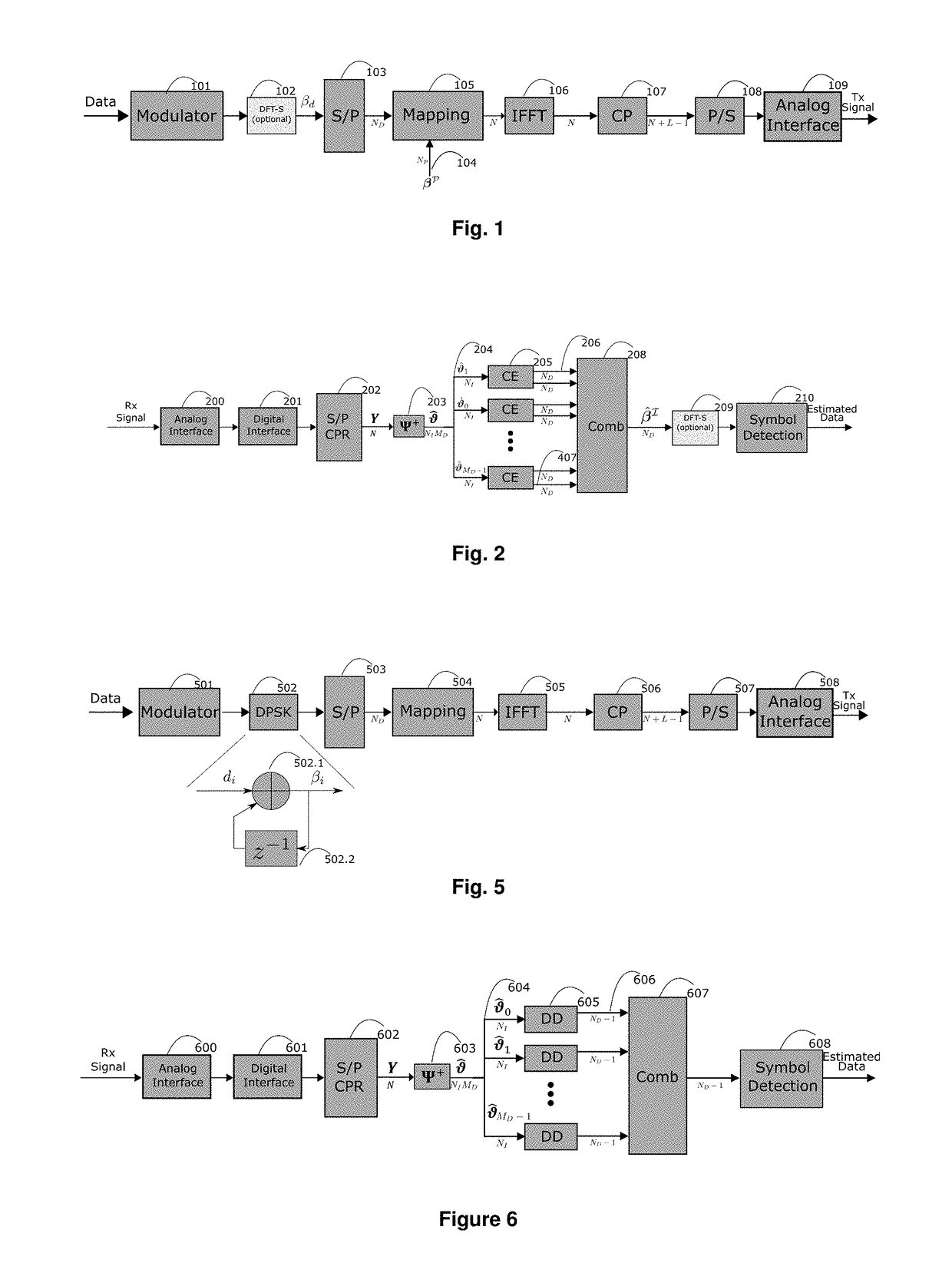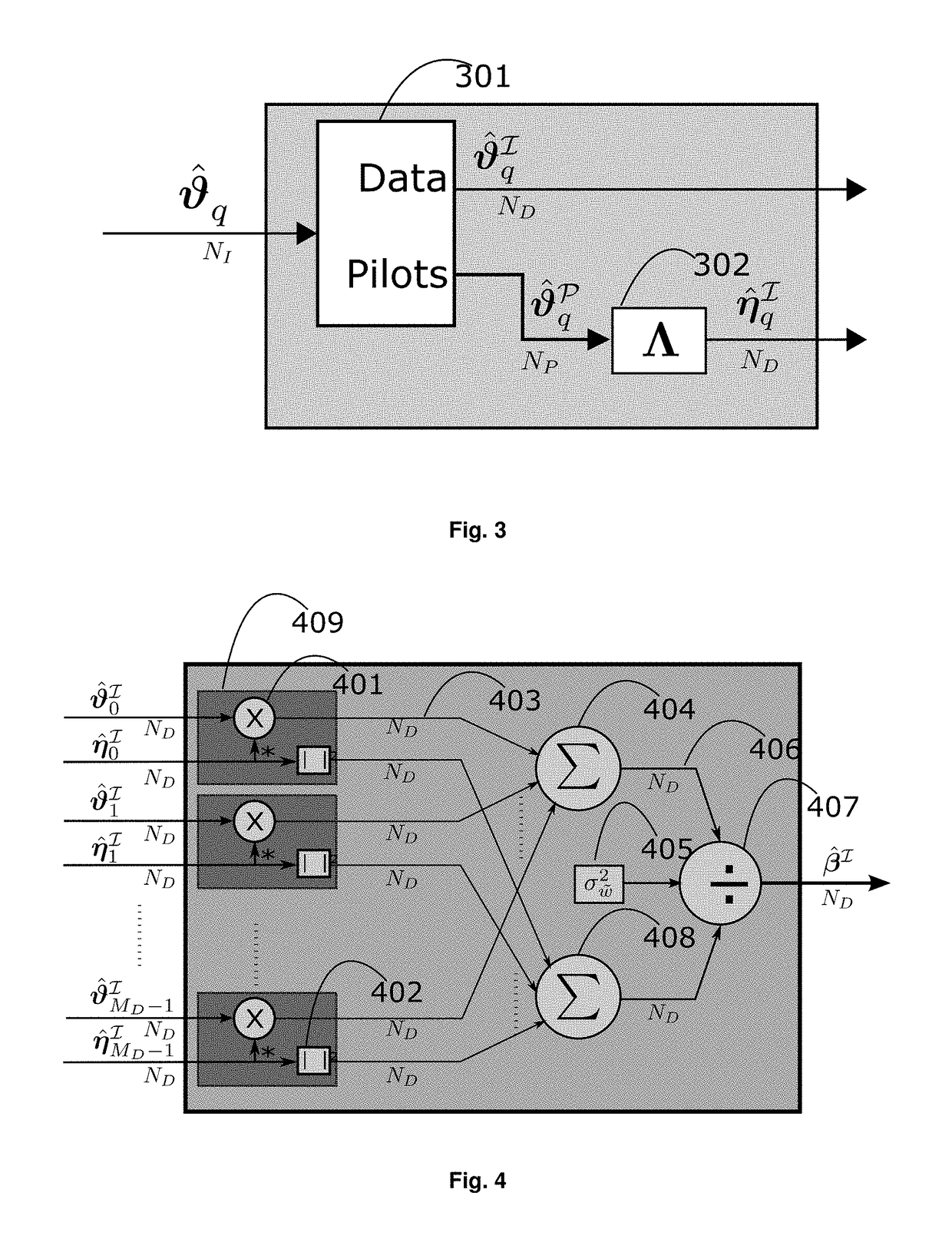Multicarrier Communication System for Doubly Selective Channels Using Virtual Trajectories Receiver
a communication system and receiver technology, applied in the field of multi-carrier wireless communication systems, can solve the problems of large quantity of parameters, no savings a priori, and compensation of dsc, and achieve the effects of low complexity, low complexity and high performan
- Summary
- Abstract
- Description
- Claims
- Application Information
AI Technical Summary
Benefits of technology
Problems solved by technology
Method used
Image
Examples
##nt embodiment
Incoherent Embodiment
[0050]In order to achieve incoherent reception, the transmitter requires a differential coding stage prior carrier modulation. The information bits are mapped to m-ary PSK complex constellation symbols di, after this, the differential encoder follows the recursion rule:
βi=β(i-1)di (1.48)
Similarly to a FD-DOFDM system, for a total of ND carriers, only ND−1 information symbols can be transmitted per block (the first subcarrier is used as reference only). Differential encoding is performed individually on each block so that, there is no inter block dependency.
[0051]Based on the structure of the differential encoder, an incoherent detector is proposed in the following. Using (1.34) the output of the virtual trajectory estimator for each Doppler component can be expressed as (1.18):
ϑq=D(β)Γαq=D(β)ηq (1.49)
where ηq=[ηq[0] . . . ηq[ND−1]]T. The last expression remains the I / O model of SC DPSK signals under Rayleigh fading; note that ηq can...
PUM
 Login to View More
Login to View More Abstract
Description
Claims
Application Information
 Login to View More
Login to View More - R&D
- Intellectual Property
- Life Sciences
- Materials
- Tech Scout
- Unparalleled Data Quality
- Higher Quality Content
- 60% Fewer Hallucinations
Browse by: Latest US Patents, China's latest patents, Technical Efficacy Thesaurus, Application Domain, Technology Topic, Popular Technical Reports.
© 2025 PatSnap. All rights reserved.Legal|Privacy policy|Modern Slavery Act Transparency Statement|Sitemap|About US| Contact US: help@patsnap.com



